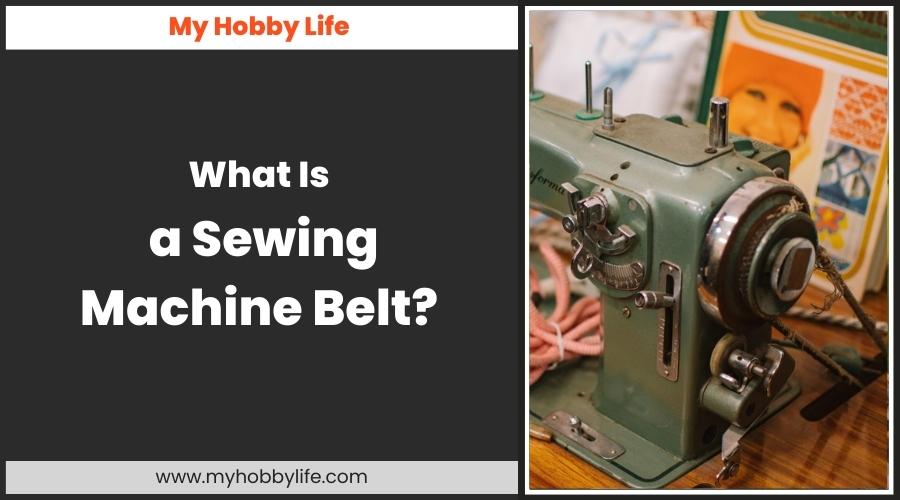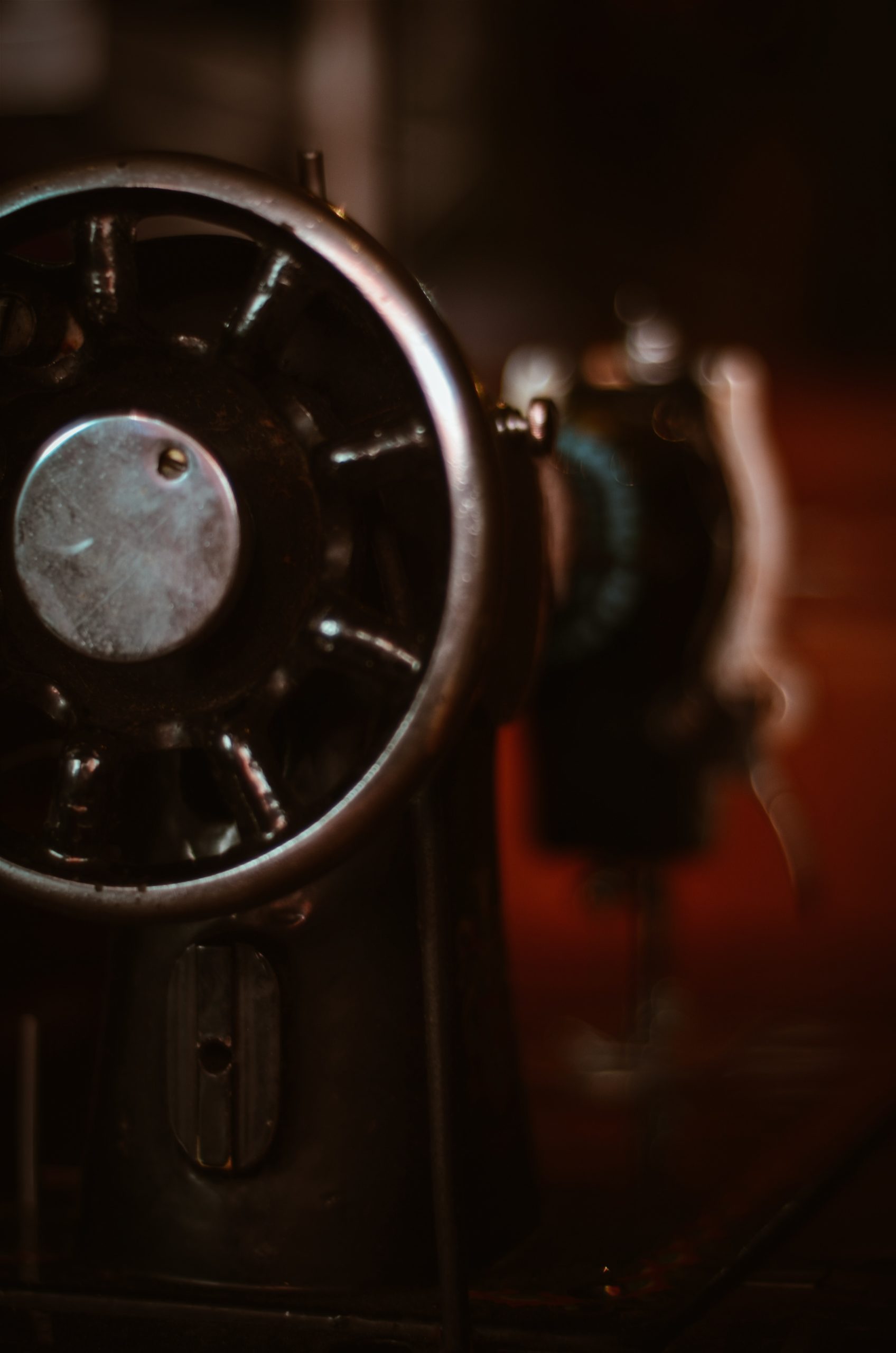Understanding the role of a sewing machine belt will help you to operate the device better. It is used in a sewing machine to increase its grip and reduce slipping to drive the machine smoothly. The belt is mainly responsible for driving the needle into the fabric, making it an essential part of your sewing machine.
There isn’t only one sewing machine belt as there are different types of it, which you will see below. Also, keep in mind the several aspects and issues surrounding the sewing machine belt, as well as considerations before buying one.
Types of sewing machine belts and their key features:
- Lug belts
- Features teeth on its inside
- At times has cogs on the outside
- V belts
- Is identical to lug belts, particularly in its V-shape attachment
- Does not have spikes or teeth
- Is smooth
- Round belts
- Is stretchable
- Geared belts
- Has teeth similar to those of lug belts
Lug belts
Lug belts are the most commonly used sewing machine belts. They are often mistaken for geared belts because of the spikes, which are a common feature. But the key distinction between the two is that the lug belts’ spikes are not supposed to fit into the pulley indentations and the geared belts’ spikes are meant to fit the indentations.
V belts
V belts are pretty similar to lug belts and are both located in a “V” position. However, V belts are smooth, while lug belts have spikes.
Round belts
The stretchy nature of round belts makes them the preferred choice over lug belts or V belts. Round belts have a better and firmer grip, thus reducing the chances of slipping.
Geared belts
The geared belts’ spikes or cogs are supposed to fit the grooves of the motor pulley. The one technicality with that is that if your sewing machine comes with a geared belt, then in case of replacements, you need to find the correct and exact belt made for your sewing machine.
How will you know if your sewing machine belt needs a repair or replacement?
The belt that comes with your prized sewing machine is not supposed to last very long. Eventually, you will need to either have it fixed or replaced, depending on the extent of the damage.
Signs of a bad sewing machine belt that needs a repair or replacement:
- If the belt is on the outside of your machine, you’ll immediately notice signs of wear and tear – cracks, disintegration, or excessive slack to the belt (you may even hear a clicking sound because of too much slack).
- If the belt is on the inside of your machine, you’re likely to struggle to sew, or the machine will stop sewing altogether.
- If your machine’s feed dogs or hook has gotten very old, you will need a new belt.
If you choose to replace your sewing machine belt, you can find it at department stores, arts and crafts shops, a store specializing in sewing machines and sewing machine parts, or online stores such as Amazon.
Things to consider before buying a sewing machine belt
When you invest in a sewing machine belt, you should consider a few things before making your purchase. If you naively place the wrong order for it, you’ll end up disappointed not only because it’s going to be a waste of money but also because having the wrong choice of a sewing belt will be of no use to you.
So, to avoid falling into that pitfall, it’s important to heed these considerations before buying a new belt:
1) The belt’s compatibility with your sewing machine
While this seems a no-brainer, many people tend to forget this crucial factor when making a purchase. For instance, since the geared belt is supposed to fit the pulley, it is important to find a geared belt that matches the pulley cogs.
Therefore, make sure you buy a new belt according to your sewing machine’s model to fit in the machine.
2) Measurements are crucial
Measurements are an essential factor when buying a new sewing machine belt. If the belt does not fit your motor pulley or is too loose, it becomes pointless, and your sewing machine will become useless.
There are two ways of measuring the sewing machine’s length, depending on where the belt goes inside or outside.
Inside: If the sewing machine belt is found on the outside and your machine is pretty old, then measuring the belt is not an issue. All you need to do is remove the belt from the machine, cut it in half from anywhere, and then pull the belt in a straight line to measure it using a ruler or a tape measure.
Outside: But if you’re using a newer and more modern sewing machine model and sewing machine belt, then here’s what you should do to obtain measurements:
- If your machine’s motor is adjustable, center the bolt in the absolute middle.
- Tie a shoestring around the motor where the pulley is found. Tie it lightly (like you would a belt) and cut the access string.
- Next, cut the shoestring that you tied from the middle and stretch it to its length so you can measure it using a ruler or a tape measure.
3) Quality is very important
You should prioritize quality over low price when buying a sewing machine belt. A top-quality belt will last in your sewing machine for a long time. It looks like it’s not a big deal, but it’s also important that you should purchase a new belt from a reputable shop that sells quality and dependable sewing products, such as sewing machine components.
4) The type of belt you use
Once again, the new belt should be compatible with your sewing machine. Make sure that it will not only have your sewing machine running smoothly, but it will also fit the machine perfectly.
Depending on the type of motor and pulley, decide which type of belt suits and fits your sewing machine best. Keep that information in mind as you make your purchase.
The takeaway
The use of sewing machines may have declined over time, with the sewing machine themselves at our homes collecting dust. But with the availability of accessories like the sewing belt, it’s possible to revive the sewing talent and hobby. Moreover, the availability of information and resources for sewing machines is the most significant push. It may encourage people to take their old sewing machines from the dust and clean them up, at least if not use them for the time being.

